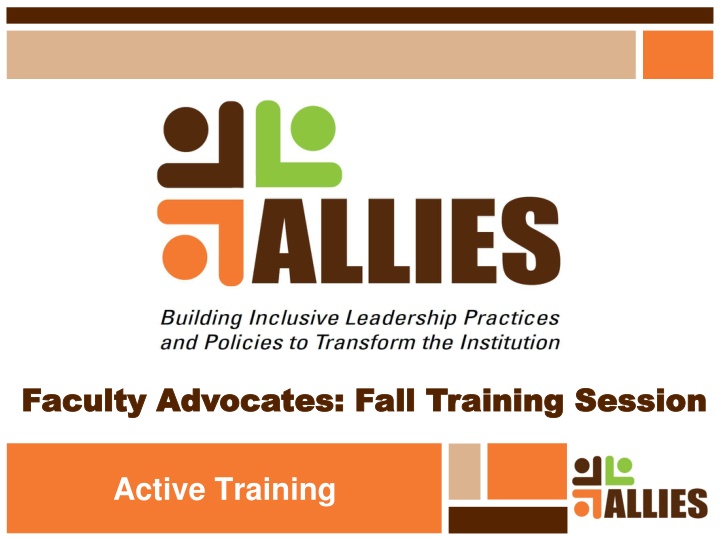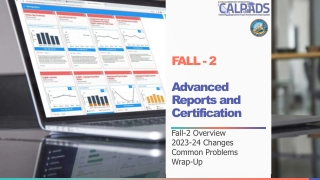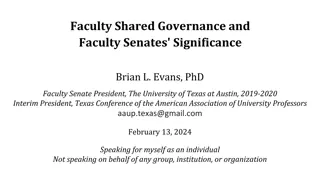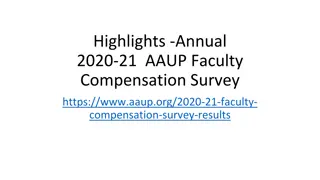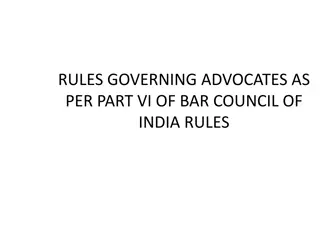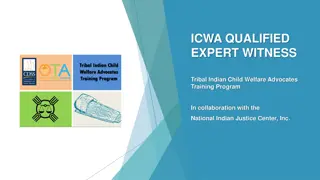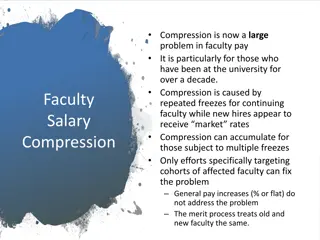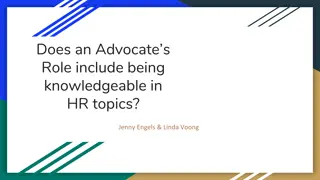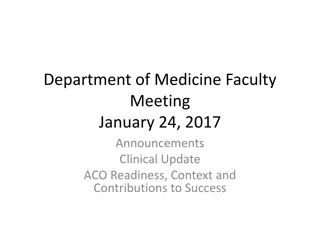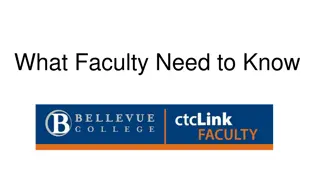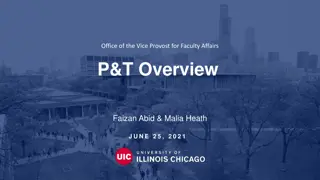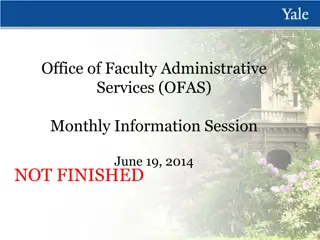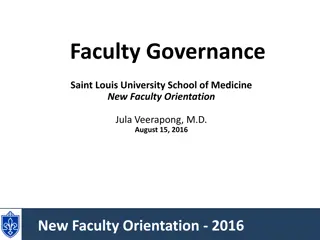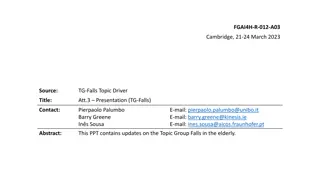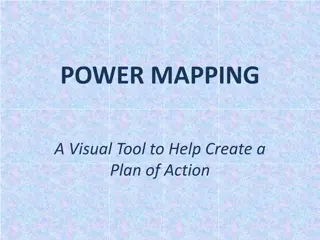Faculty Advocates: Fall Training Session
Fall training session for faculty advocates focusing on assessing needs and interests, interactive training, critical conversations, defining objectives, and expanding toolkits. Includes activities like surveys, email conversations, and one-on-one meetings to gather data. The program aims to enhance ally actions and facilitate discussions on privilege and microaggressions.
Download Presentation

Please find below an Image/Link to download the presentation.
The content on the website is provided AS IS for your information and personal use only. It may not be sold, licensed, or shared on other websites without obtaining consent from the author.If you encounter any issues during the download, it is possible that the publisher has removed the file from their server.
You are allowed to download the files provided on this website for personal or commercial use, subject to the condition that they are used lawfully. All files are the property of their respective owners.
The content on the website is provided AS IS for your information and personal use only. It may not be sold, licensed, or shared on other websites without obtaining consent from the author.
E N D
Presentation Transcript
Faculty Advocates: Fall Training Session Faculty Advocates: Fall Training Session Active Training
Training Session Overview 1. Assessing Units Needs & Interests 2. (Inter)Active Training 3. Facilitating Critical Conversations 4. Next Steps & Evaluation
Assessing Needs and Interests October to early December 2019 Why do Advocates need to start assessing "needs and interests" of faculty members in your units and departments? What do Advocates need to ask? How can Advocates gather data? 1. Survey link: https://www.surveymonkey.com/r/9F7ZT55 2. Email conversation 3. One-on-one meeting 4. Faculty meeting 5. Department events Meet with your Allies liaison to review key findings in December. Remember: Title IX Mandatory Reporting
(Inter)Active Training 1. The Big Picture 2. Articulating Objectives 3. Expanding Our Toolkits 4. Setting It Up for Success 5. Debriefing/Discussing 6. Follow-Up
I. The Big Picture Assess Needs/Interests Evaluate the Program Define Goals/Objectives Facilitate the Program Design the Program
I. The Big Picture A Hypothetical Timetable 1:00-1:10 Introductions, Overview 1:10-1:15 Ground Rules 1:15-1:20 Short Interactive Lecture 1:20-1:35 Training Application or Activity 1:35-1:50 Debriefing 1:50-2:00 Summary, Next Steps, & Evaluation
II. Articulating Objectives Based on needs assessment S(M)ART: Outcome-oriented Examples (Pick One): In a 60-minute training session, faculty should be able to . Define privilege & identify different forms of privilege they experience Define microaggressions & identify microaggressions in everyday faculty life Describe and practice 3 everyday ally actions
III. Expanding our Toolkits Advocates have many tools and techniques to engage trainees and facilitate active training. (See handout)
IV. Setting Us Up for Success Structuring & Sharing the Session s Agenda Structuring Your Space Setting Up Your Space (Materials, etc.) Establishing Ground Rules & Group Norms Accessibility and Inclusivity Identifying Roles
V. Debriefing Constructive Feedback Specific, actionable/feasible, well-timed What should they continue, stop, and start doing? Discussion Facilitation Tools Identifying Specific Action Items
Summary 1. The Big Picture 2. Articulating Objectives 3. Expanding Our Toolkits 4. Setting It Up for Success 5. Debriefing/Discussing 6. Follow-Up
Facilitating Critical Conversations A critical conversation is a dialogue between two or more people in which they discuss topics about which people tend to have conflicting views. Goals: To understand one another's perspectives To work together to form a shared vision of how to move forward
The Faculty Advocate Role & Critical Conversations As Advocates facilitating these conversations, you will: Promote a culture of bystander intervention Be a catalyst for change in your departments Increase awareness about diversity and inclusion topics Role model how to speak up when we see/hear bias, microaggressions or problematic behaviors in general At their core, critical conversations are learning opportunities where we can seek to understand and seek to be understood. (Catalyst, 2016, 2018; Thompson, 2017)
Preparing for Critical Conversations Preparation Steps 1. Establish goals 2. Identify the specific issue(s) 3. Connect the issue(s) to their impact 4. Reflect on triggers 5. Strategize how to handle triggers
Be in Dialogue Mode! During critical conversations, dialogue will be an effective communication tool to implement. Dialogue is about exploring common ground, collaborating to find solutions to issues, and building relationships. However, "debate mode" styles of communication often occur during conversations. Why do you think this is?
Strategies Ground Rules Suspend Judgement Summarize and Paraphrase Silence Nonverbal Communication Open-ended Questions
Activity In groups of two or three, discuss your assigned scenario. Using the preparation steps outlined on page one, develop a plan about how you would address the situation, including specific things you would say. Then, we will come back as a large group and a person from each group will role play their response to the scenario. We will begin the skit from the point at which you begin to address the issue. ALLIES team members will play the role of the person/people making the problematic comments. Preparation Steps 1. Establish goals 2. Identify issue(s) 3. Connect issue(s) to impact 4. Reflect on triggers 5. Strategize how to handle triggers
Next Steps Expectations for the Fall: 1. Send head shots and bios to allies@bgsu.edu. 2. Follow BGSU ALLIES on Facebook & Twitter. 3. Meet with your Advocates team member(s). 4. Reach out to your home units (introductions & needs assessment). 5. In December, meet with your ALLIES liaison to discuss key findings from your needs assessment. Expectations for the Spring: 1. Attend BGSU ALLIES Workshop on January 23, 2020. 2. Attend a follow-up Advocates training session. 3. Design and facilitate a training session in each of your units. Evaluations
